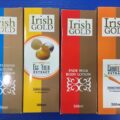Skin bleaching refers to the use of products to lighten dark areas of the skin or achieve an overall lighter complexion. These products include bleaching creams, soaps, and pills, as well as professional treatments like chemical peels and laser therapy.
Efforts to lighten the skin date back to at least the 1500s in Asia. Several chemicals have been shown to be effective in skin whitening, while some have proven to be toxic or have questionable safety profiles. This includes mercury compounds which may cause neurological problems and kidney problems. In a number of African countries, between 25 and 80% of women regularly use skin whitening products. In Asia, this number is around 40%. In India, specifically, over half of skin care products are sold to whiten skin.
There are many complex terminologies in use when it comes to skin bleaching. In this article we will try to provide insights and explanation as to what each implies as well as the advantages and disadvantages of bleaching.
What is Skin whitening?
Skin whitening is a term that is used differently depending on the source. This is where you have to be extra diligent in looking at your ingredients and the company before purchasing or using a skin whitening product. For example, it’s very common among individuals of Asian descent to use the term skin whitening for products that lighten darker skin spots. In this case, skin whitening is referring to the use of creams that combat hyperpigmentation.
Contrast this with skin bleaching products which change the color of your natural skin. Bleaching is achieved through the use of very harsh and possibly dangerous chemicals and is not recommended.
What is Skin lightening?
The process of using skin products that lighten dark spots caused by hyperpigmentation is referred to as skin lightening. In essence, skin lightening evens the skin tone by focusing on areas of the skin that are discolored, like blemishes and pigmentation, age spots, acne, and other forms of hyperpigmentation. This is achieved through the use of a lightening cream that inhibits the overproduction of the enzyme tyrosinase that is responsible for producing melanin.
How Skin Lightening Cream Works
Skin lightening creams contain ingredients that work to decrease your body’s production of melanin. Melanin is responsible for the pigment in your skin, and is made by cells called melanocytes. Bleaching products work by lowering the number of melanocytes in your skin. Most skin lightening creams contain hydroquinone, which is known to decrease melanocytes. Vitamin C, also a common ingredient in skin lightening creams, is an antioxidant that is known to lower melanin production in our cells. Glycolic acid, which is also found in many skin brightening creams, works as an exfoliant and helps to brighten the skin by clearing away dead cells.
Signs of Damaged Skin
Bleaching creams have many side effects one of which is the skin damage that shows up in your mirror. When this happens, you’re likely to see the following signs:
- Dryness, flakiness, dullness
- Fine lines and wrinkles
- Hyperpigmentation, acne scars, sun spots
- Moles and freckles
- Sagging, bagging, loss of elasticity and firmness
- Redness, swelling and inflammation
- Rashes and allergic reactions
- Visible blood vessels
How to treat skin damaged by bleaching cream
The first and most important step in repairing a skin damaged by bleaching cream is to stop using the bleaching cream, soap or lotion. The following remedies can help you treat skin damaged by bleaching cream, soap, lotion or oils;
Aloe Vera Gel: Aloe vera has been used throughout history to assist with skin repair and aloe vera can help treat skin damaged by bleaching cream. Aloe vera is known for its soothing benefits, aloe can also help calm the skin, reduce skin inflammation, treat wounds, and help the skin heal. It also moisturizes the skin, improves skin’s firmness, and reduces itchiness and dryness caused by bleaching products. Apply to damaged skin daily in the evening, when skin goes into repair mode, before you apply your oil-based serum or moisturizer.
Use Skincare Products With Antioxidants: If you want to take an active role in reducing the appearance of damaged skin, you’ll want to load up on nutrients, inside and out. Vitamin C helps prevent signs of aging and brightens skin. It helps fight free radicals, smooth skin, even skintone, improve hydration, and helps protect skin from the sun. Vitamin E helps fight free radicals, prevents signs of aging, and moisturizes and strengthens the skin.
Look for sensitive skin friendly, stable forms of Vitamin C such as tetrahexydecyl ascorbate. Vitamin E is great for dry skin and damage related to post-acne scars. We also recommend rosehip oil as it’s a natural source of skin loving pro-vitamin A and bakuchiol for its retinol-like results.
Coenzyme Q10 and Hyaluronic acid: Coenzyme Q10 soothes the skin and allows the skin damaged by bleaching cream to retain moisture while also creating a smooth and dewy appearance. It helps to reduce the appearance of fine lines and wrinkles. Hyaluronic acid helps hydrate the damaged skin and reduce the appearance of fine lines and wrinkles . It’s also gentle enough to use on sensitive, redness-prone skin.
Try Green tea, Jojoba and Moringa: The soothing and calming green tea helps improve the appearance of sun-damaged skin and can help prevent acne. Jojoba helps calm and soothe the skin. It also moisturizes, controls oil, and helps to relieve itchiness and dryness, making it great for treating eczema, psoriasis, and chapped lips and skin. While Moringa seed oil helps to moisturize skin, fights acne, and can be used to treat under-eye puffiness.
In addition, organic botanical oils can also help to restore moisture levels of skin damaged by bleaching cream, creating the ideal environment for your skin to thrive, while also being a source for topical nutrients, fatty-acids and skin supportive properties. Good botanical oils for skin include; Tamanu Oil, Sea Buckthorn, Calendula.
Consume Nutrient-Rich Foods: When looking into treatments that can help repair skin damaged by bleaching cream, think of food as your internal support system. It’s vital that all of your external efforts to repair damaged skin are matched internally through your diet. To help your skin with its own repair process, make sure you are consuming organic, nutrient-rich foods. Avoid processed foods and refined sugar. Drink filtered water throughout the day to keep skin hydrated. Make sure each meal consists of a colorful plate, full of antioxidant-rich leafy-greens, healthy fats and a quality-source of protein. Look into the basic principles of an anti-inflammatory diet. This will help you choose the right foods and eat your way to healthy skin.





